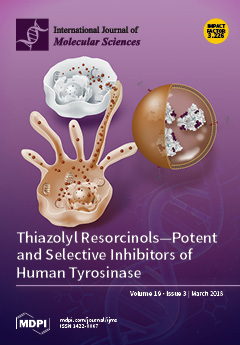The
l-arginine/agmatine transporter AdiC is a prokaryotic member of the SLC7 family, which enables pathogenic enterobacteria to survive the extremely acidic gastric environment. Wild-type AdiC from
Escherichia coli, as well as its previously reported point mutants N22A and S26A, were overexpressed homologously
[...] Read more.
The
l-arginine/agmatine transporter AdiC is a prokaryotic member of the SLC7 family, which enables pathogenic enterobacteria to survive the extremely acidic gastric environment. Wild-type AdiC from
Escherichia coli, as well as its previously reported point mutants N22A and S26A, were overexpressed homologously and purified to homogeneity. A size-exclusion chromatography-based thermostability assay was used to determine the melting temperatures (
Tms) of the purified AdiC variants in the absence and presence of the selected ligands
l-arginine (Arg), agmatine,
l-arginine methyl ester, and
l-arginine amide. The resulting
Tms indicated stabilization of AdiC variants upon ligand binding, in which
Tms and ligand binding affinities correlated positively. Considering results from this and previous studies, we revisited the role of AdiC residue S26 in Arg binding and proposed interactions of the α-carboxylate group of Arg exclusively with amide groups of the AdiC backbone. In the context of substrate binding in the human SLC7 family member
l-type amino acid transporter-1 (LAT1; SLC7A5), an analogous role of S66 in LAT1 to S26 in AdiC is discussed based on homology modeling and amino acid sequence analysis. Finally, we propose a binding mechanism for
l-amino acid substrates to LATs from the SLC7 family.
Full article






